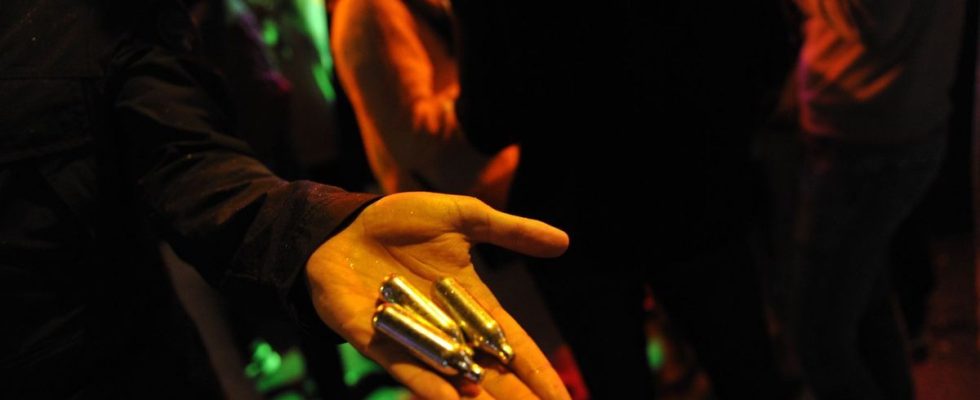Published on
Updated
Reading 2 mins.
in collaboration with
Dr Gérald Kierzek (Medical Director)
Nitrous oxide, consumed for its euphoric effects by many young people, is not only addictive. It also causes injuries and neurological damage, sometimes serious. Dr. Gérald Kierzek, an emergency doctor, sees them regularly in his department.
Small canisters strewn on the ground next to balloons. Here is what remains of certain evenings between young people seeking to have fun and laugh. Problem, the nitrous oxide or laughing gas inhaled in these evenings is not insignificant and has become for some years a real public health problem, behind which parents remain powerless.
A gas that is too accessible today
Nitrous oxide is an anesthetic gas for medical use, but it is also found in small cartridges for whipped cream dispensers, used in the kitchen. Hence its easy access. Faced with the increase in its consumption, the sale of nitrous oxide has been prohibited to minors since 2021. A good measure, but insufficient. “It remains easy for these young people or young adults to find them on the internet and in supermarkets” testifies Dr. Gérald Kierzek emergency doctor who finds himself regularly treating young patients in his department.
Its recreational use remains just as simple: it involves “cracking” the vial to inflate balloons, which will then be sucked in, for their euphoric, addictive effect, all of which is often associated with drugs and alcohol. In short, a harmful cocktail.
Risks of deep burns and neurological risks
The recreational use of the “proto” as it is called, however, hides several risks, of which young users still do not seem to be aware. “There is already an immediate risk of cold burns and injury related to the handling of these vials” says our doctor. Deep burns of the thighs in particular are to be deplored. The immediate risk also includes loss of consciousness, or even a fall in the event of an uncontrolled effect.
But the effects of chronic and repeated use are even more concerning.”Regular use causes neurological damage to the spinal cord, which is linked to a vitamin B12 deficiency. Nitrous oxide inactivating this vitamin” recalls Dr. Kierzek. With what effects? Damage to the legs, limbs, with loss of muscle tone, for example.
“Even last week, in the emergency room, I had a young woman with sensitivity disorders in the lower limbs. It wasn’t a motor disorder, but she no longer felt her skin, which was like “cardboard” for her. It turned out that she had consumed a lot of proto over the summer.”
According to MIDELCA, the interministerial mission to combat drugs and addictive behavior, psychiatric, hematological and cardiac disorders can also be attributed to nitrous oxide.
What to do if your child consumes it?
According to MIDELCA, if you discover that your teenager is using “proto” with his friends, do not panic, but do not trivialize the situation. Try to establish a dialogue with your child on his motivations to use and on the risks that this represents.
It is also possible to make use of a “young consumer consultation”, or CCJC, recalls Dr. Kerziek. You can reach one of the listeners anonymously every day from 8 a.m. to 2 a.m. on 0 800 23 13 13 or by chat.
“Finally, if your child encounters problems, it is necessary to make an appointment with a neurologist”, concludes Dr. Kerziek.
